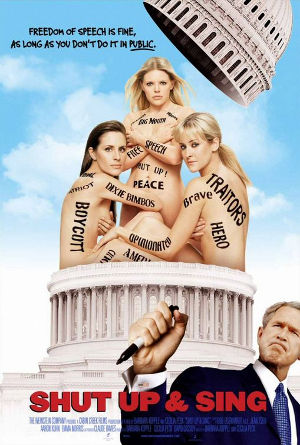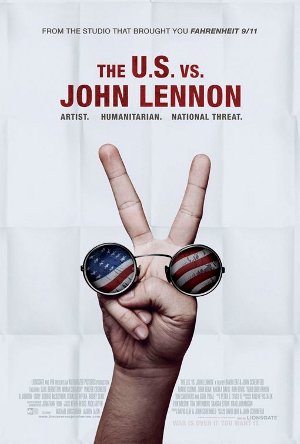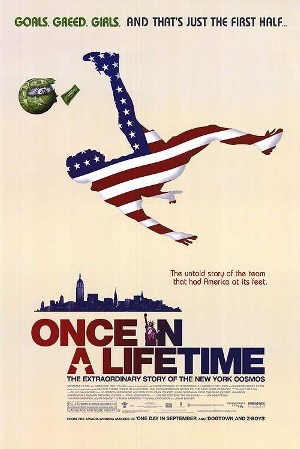The MPAA is a body of unparalleled power in Hollywood. With a word it can destroy any chance of a film getting a marketing deal and being seen by the public. You would think with that much power the group would be carefully controlled and rely on strict rules and regulations, would take the time to view films and compare them to other films containing similar content, and be respectful in measuring the content and meaning of a scene (whether gratuitous or integral to the plot). You would think that would be true, but Kirby Dick’s new documentary provides a much different view of the MPAA that may shock you.
This Film is Not Yet Rated
4 Stars
In 1968 a former White House lobbyist and advisor to Lyndon B. Johnson, Jack Valenti, set-up the MPAA “voluntary” rating system. Now almost forty-years later this group of individuals, whose identities are kept more secret than undercover C.I.A. operatives, exerts tremendous power and influence on the film industry that is neither truly govened or balanced. Who are these people? How does the rating system work? Is the MPAA protecting the majority of Americans or bowing to the extremist conservative mobilized minority? Why is it so confusing? This is the subject of This Film is Not Yet Rated.
Kirby Dick‘s documentary asks many questions about the nature of the MPAA. The film includes interviews from directors and actors, former members of the movie ratings board, and a private investigator’s attempts to hunt down the secret members who wield unchallenged power over the film industry.
At its best the film is insightful and instructive especially when it examines the short-comings of the rating and appeal process every film that wishes to be distributed in the United States must “voluntarily” go through. Though the MPAA rating is voluntary any film without a rating will not be shown by the large theater chains or be allowed in large video stores such as Blockbuster.
The film has many points which to discuss but I’ll limit a few that I found particularly interesting. Here are five of the most troubling tidbits Dick and his investigator were unable to uncover in the course of their investigation. The film isn’t limited to these points, but it will give you a basic idea of its focus.
1. The Ratings Board – The board is made of of “ordinary” U.S. citizens with no training in child behavior or psychology. The members undergo no training and are never given a crash course or standards or practices to follow. Each earns $30,000 a year for his or her service for the board and must sign non-disclosure agreements against speaking about films or the board itself. The chairperson, Joan Graves, was appointed by Valenti himself and personally hires all members of the board. She lives in a multi-million dollar home, I guess it pays to be the chief. It’s the only ratings board of its type that the members identities are kept secret, even from the filmmakers themselves. The members have a limited time to serve on the board and must have at least one child between the ages of 5 and 17. However the investigation showed that at least one member had served well past the mandatory period and several members had children who were fully grown and out of the house.
2. Violence is Moe Acceptable than Sex – Films with strong sexual themes, graphic or not, nudity or not, are four times as likely to be given a NC-17 rating over films with graphic violence (which at worse will get an R, and can often skate by with an PG-13).
3. What do They Have Against Homosexuals? – The film provides one of it’s clearest arguments here in presenting footage from straight sex scenes side-by-side with gay sex scenes that are shot in the same style and camera position. Even if the gay scene is less explicit it earned a harsher rating. So why does a masturbation scene from But I’m a Cheerleader get an NC-17 while a similar scene from American Beauty passes with an R? Why does the sex scene from Boys Don’t Cry demand a cut to make an R-rating, but the same scene is permissable in Single White Female? Henry & June vs. Sideways? Mysterious Skin vs. Unfaithful? The MPAA denies any such discrimination but the list goes on and on, and the facts do seem to tell the tale.
4. The Appeal Process is a Joke – If a director wants to fight a rating he feels is ill-deserved he can confront an appeal committee, again of nameless faces, which it turns out include priests and theater executives. A director however cannot ask questions to the appeal board, cannot quote precedents, cannot compare other similar scenes from films given a different rating, and no tape or written record is allowed. You are allowed to show up and beg for mercy.
5. Filmmakers Don’t Understand the Process – The film contains interviews from several directors including John Waters, Kevin Smith, Kimberly Peirce, Wayne Kramer, Matt Stone, Allison Anders, Mary Harron, Darren Aronofsky, and others. Without an exception each individual was stunned and saddened by how the MPAA works and how their films were treated without context or precedent ever being considered.
Given that the standards for membership aren’t upheld, the members themselves aren’t trained or held to standards themselves, the group discriminates against same-sex relationships, the process confuses studios and filmmakers and favors big studio projects over independent films, and prefers men to shoot multiple holes in another guy than kiss the girl (let alone another guy), hides its members in secrecy, and has an appeal process that can only be considered a joke, it’s running just fine. Good thing they don’t have any real power….oops.
The film covers quite a bit of ground. There are small faults – the film gets a little too wrapped up in the private-eye and the investigation for its own good, but overall it’s a very educational and entertaining look at a big problem that lies at the heart of American filmmaking. Will the film do any good, cause any changes to occur? Who knows, but for 97 minutes it raises the issue and presents a compelling case. That’s more, much more, than most films do these days.






 The year of the documentary continues. The U.S. vs. John Lennon takes its place along a great list of documentaries released this year that include
The year of the documentary continues. The U.S. vs. John Lennon takes its place along a great list of documentaries released this year that include 
 The film focuses on the rise, short glory, and disastrous fall, of the New York Cosmos – the first, and maybe last, great soccer team in American history. Founded by Steve Ross, the Cosmos were the first Dream Team to play on American soil. With soccer greats Pele, Franz Beckenbauer, and Giorgio Chinaglia, they broke into the minds and hearts of New Yorkers and across America.
The film focuses on the rise, short glory, and disastrous fall, of the New York Cosmos – the first, and maybe last, great soccer team in American history. Founded by Steve Ross, the Cosmos were the first Dream Team to play on American soil. With soccer greats Pele, Franz Beckenbauer, and Giorgio Chinaglia, they broke into the minds and hearts of New Yorkers and across America.